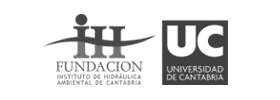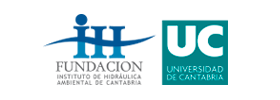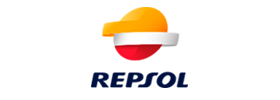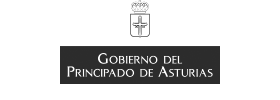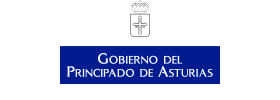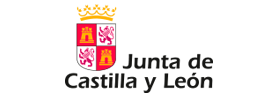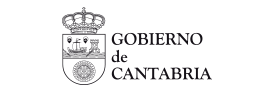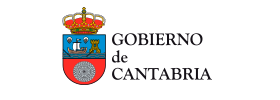
Characterization of aquatic habitats through analysis of water quality, remote sensing techniques to inventory lentic bodies of water, hydraulic infrastructures and characterize the riparian habitat. All this should allow the definition of environmental flow regimes for the rivers in these basins and the development of guidelines for conservation.
> Inventory of the lentic water bodies present in the DIVAQUA area.
> Inventory of hydraulic infrastructures and natural waterfalls.
> Physical and chemical characterization of aquatic ecosystems in the DIVAQUA area.
> Characterization of the riparian environment in the Sella and Deva-Cares basins.
> Cartography of vegetation in terrestrial and aquatic habitats using remote sensing techniques.
> Validation of future scenarios through a participatory process.
> Proposal of a methodological guide for the conservation of aquatic diversity.
> Modeling of the natural water regime and effects of climate change.
2
Increased knowledge about the distribution of species of Community interest (Annexes I, II and IV of the Habitat Directive), pathogenic species and invasive species in the DIVAQUA area through environmental DNA analysis.
> Distribution of pathogens in the water bodies of the DIVAQUA area.
> Distribution of invasive species in the water bodies of the DIVAQUA area.
> Distribution of populations of key species for conservation.
> Prioritization of actions in different bodies of water and development of safety protocols.
3
Improvement of the structure and functionality of the riparian forest in the Duje and Cares rivers and in mountain springs, as well as reducing the effects of channeling and bypass channels.
> Improvement of the habitat of alder and ash trees of alluvial forests in the middle section of the Cares river.
> Recovery of alluvial forest habitat of Alnus glutinosa y Fraxinus Excelsior trees at the head of the Duje river.
> Establishment of protection measures for the lakes of Covadonga.
> Restoration of the canalized section of the Corbera river.
> Covering of the Camarmeña canal.
> Improvement of the European chain fern (Woodwardia radicans) populations.
4
Improvement of the conservation status of lentic water bodies, through the restoration of mountain lakes and lagoons, springs and drinking mountain cattle water-troughs.
> Solutions to the dragging of sludge from settling mining rafts in the Duje river.
> Complete restoration of the Fuente Dé spring.
> Restoration of 5 springs and 5 bogs.
> Provision of amphibian ramps to 15 mountain cattle water-troughs.
5
Improvement of the connectivity of the fluvial ecosystem through the permeabilization of dams in the Sella and Deva-Cares basins, improvement of the fish scales of Poncebos location and the Urdón river.
> Permeabilization of the Puente Lles weir.
> Permeabilization of the Ferrería de Ojedo weir.
> Permeabilization of the La Depuradora dam.
> Permeabilization of the Sotama weir.
> Improvement of the fish ladder at the Urdón River hydroelectric plant.
> Improvement of the last step of the Poncebos fish ladder.
> Analysis of the connectivity and hydrological alteration of the Jocica dam.
> Protection at the entrance to the Camarmeña canal.
> Improvement of the permeability of the fish ladder on the Cain dam.
> Improvement of the permeability of the fish ladder on the Los Llanos dam.
> Improvement of the permeability of the fish ladder on the Agüeira river weir.
6
Creation of new tools and approaches to improve the monitoring, evaluation and management of the different habitats and species of Community interest included in the DIVAQUA area.
> Plan for monitoring restoration actions and hydromorphology.
> Plan for monitoring and control of aquatic fauna.
> Evaluation of the socio-economic impact of DIVAQUA.
> Valuation of ecosystem services in the DIVAQUA area.
> Evaluation of performance indicators (increase in CO2 fixation, improvements in water quality and increase in forested areas, among others).
7
Increasing participation of the local population, stakeholders and other agents in the conservation of aquatic habitats, species and ecosystem services obtained from aquatic resources through the implementation of a specific participation programme.
> Awareness program against climate change / global change.
> Training program open to the public related to the sustainable management of aquatic ecosystems.
> Volunteer Camp.
> Create dynamism of social participation in the consensus of uses of aquatic ecosystems.
> Conference for boosting civic participation.
> Promote land stewardship agreements of aquatic ecosystems with the livestock and tourism sectors.
8
Establishment of a network of managers, technicians and scientists to improve the management of mountain aquatic ecosystems, optimizing future actions on biodiversity and ecosystem conservation and establishing collaborations with other national and international networks.
> Establishment of a network for the management of mountain aquatic ecosystems: Red-DIVAQUA.
> Technical conferences to spread the achievements of DIVAQUA and learn about the improvement proposals by public administrations.







